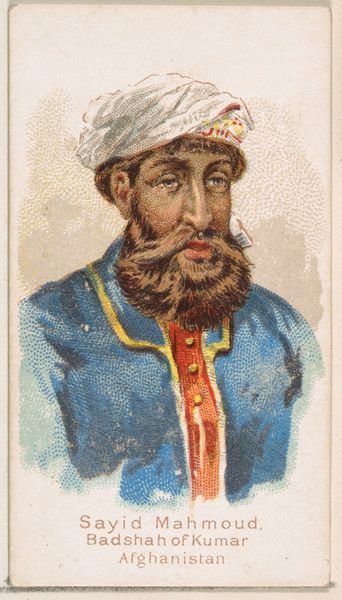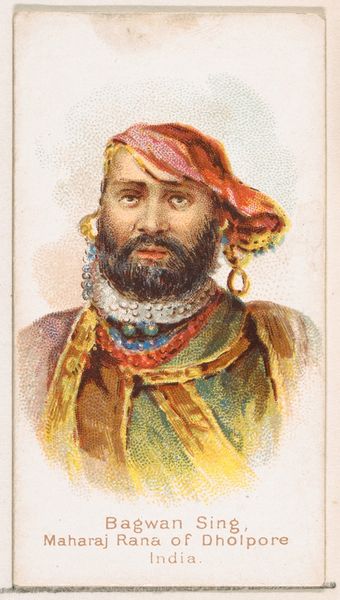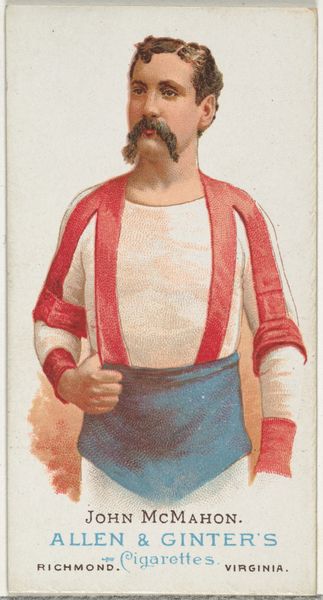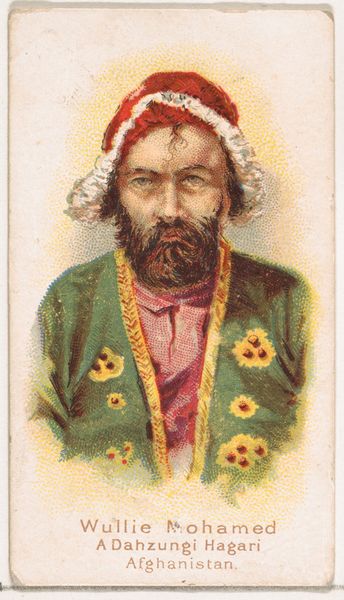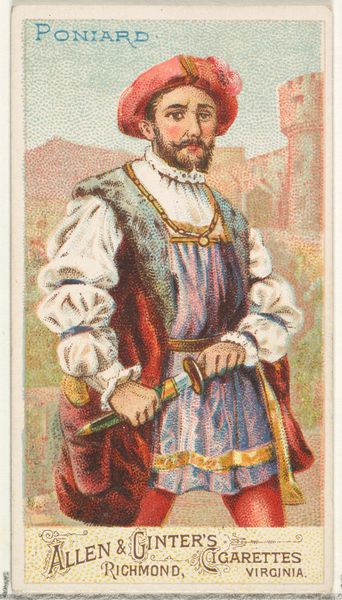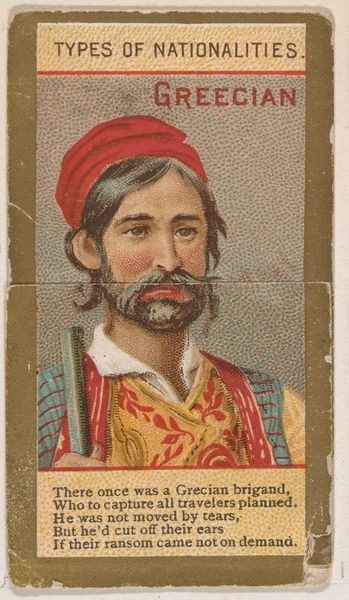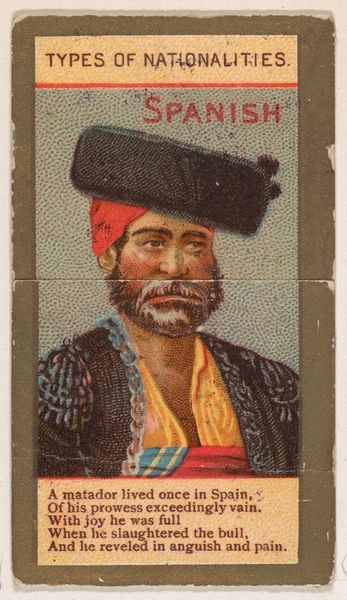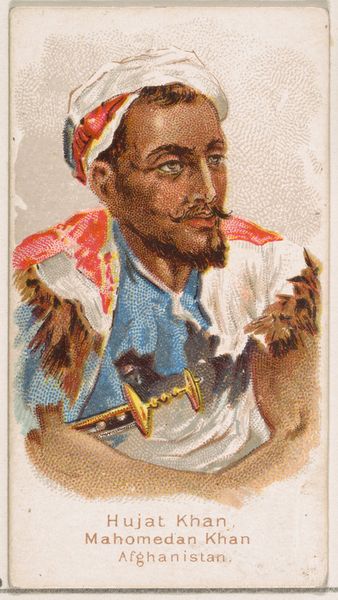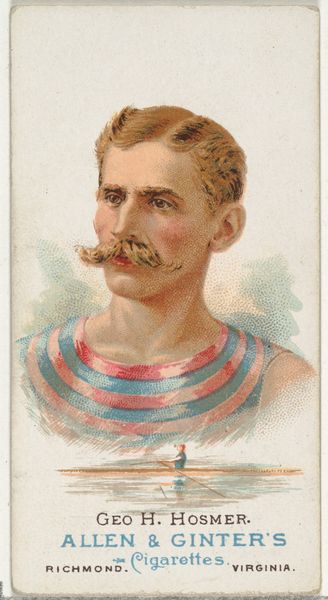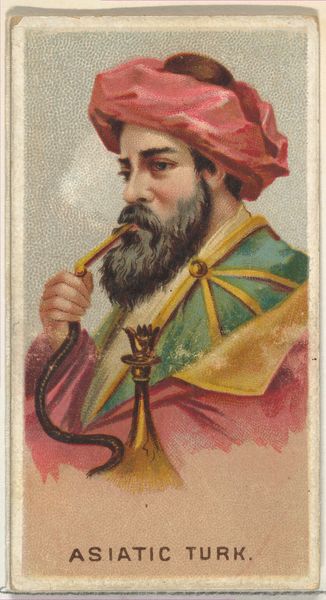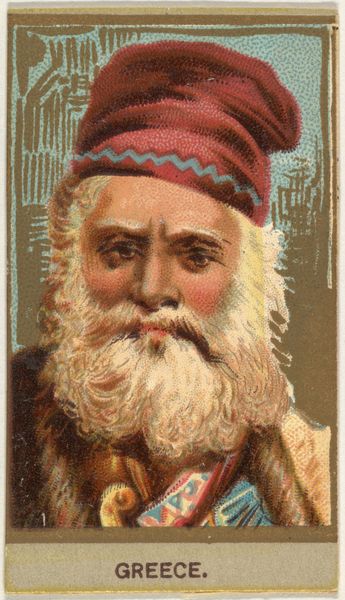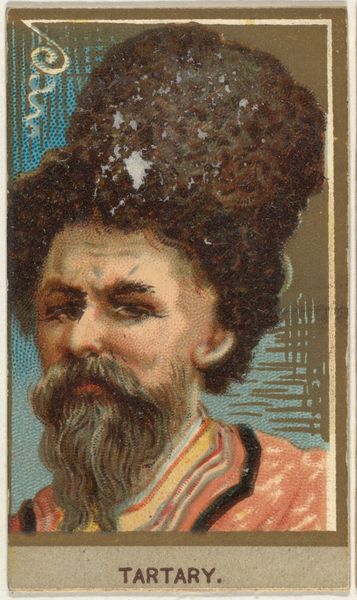
Rajah of Nagound, Africa, from the Savage and Semi-Barbarous Chiefs and Rulers series (N189) issued by Wm. S. Kimball & Co. 1888
0:00
0:00
drawing, print, photography, collotype
#
portrait
#
drawing
# print
#
caricature
#
photography
#
collotype
#
orientalism
#
men
Dimensions: Sheet: 2 11/16 × 1 1/2 in. (6.8 × 3.8 cm)
Copyright: Public Domain
Editor: This collotype print from 1888, "Rajah of Nagound, Africa," issued by Wm. S. Kimball & Co., depicts a man who, based on the title, is presumed to be African. The colours are soft, but the overall impression feels… strange, a bit cartoonish. What symbols jump out at you? Curator: It's crucial to recognize how images like this reflect the worldview of the producers, not necessarily the subject. Notice how the title itself situates the Rajah as ‘savage’ or ‘semi-barbarous,’ a common trope in Orientalist imagery. The 'savage' chief—it’s a construct meant to enforce a perceived hierarchy, where the European gaze positions itself as superior and civilizing. Does anything strike you as particularly 'off' or exaggerated? Editor: Well, his features, perhaps? The beard seems overly emphasized and somewhat… untamed? It's not what I would call a flattering portrait. Curator: Precisely! The exaggeration, which you astutely point out, serves a purpose. The unkempt beard becomes a symbol for a lack of civility, aligning with the established colonial narrative. Think about how power operates through visual codes. What does this image aim to communicate to its intended audience? Editor: That's a pretty cynical reading! It is just a caricature on a collectible card... But I understand what you're getting at. So the card’s not *really* about the Rajah; it's more about solidifying Western beliefs about other cultures. Curator: Absolutely. This card becomes a vessel for perpetuating stereotypes. It highlights the lasting power of images to shape and distort our understanding of different cultures, often reinforcing power dynamics of the time. What do you make of it now, considering that? Editor: I initially saw it as a funny old portrait. Now I'm very aware of the problematic ideology it embodies. Definitely changed my perspective. Curator: Indeed! And by recognizing that shift in perspective, you’re on your way to understanding the enduring legacy and responsibility that comes with visual representation.
Comments
No comments
Be the first to comment and join the conversation on the ultimate creative platform.
